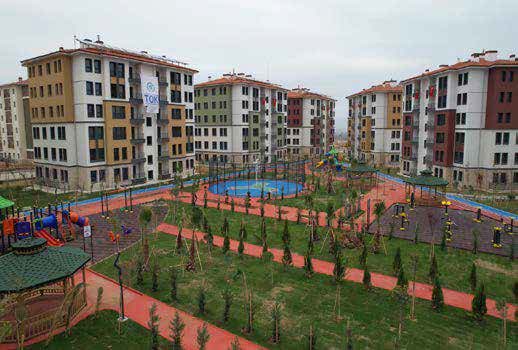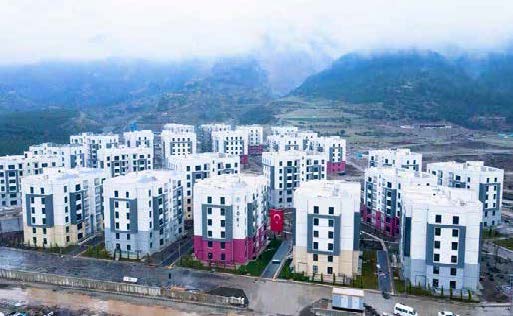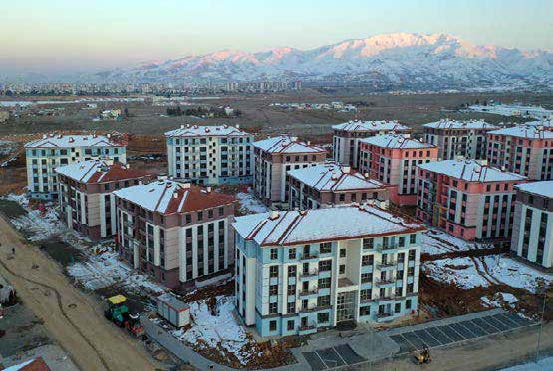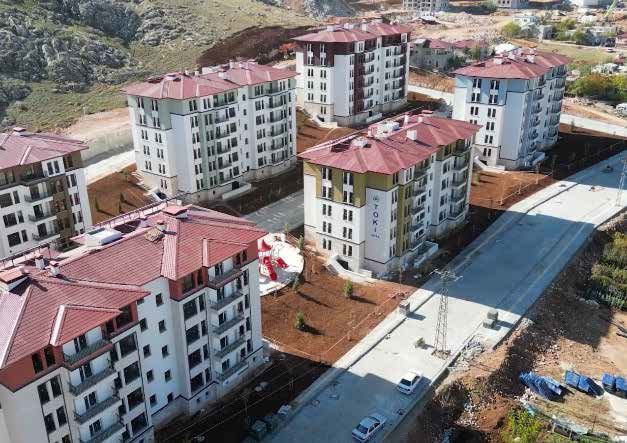One-third of Türkiye’s territory lies on an active earthquake fault zone, placing a large majority of the nation’s population lives in areas under serious threat of earthquake. Several Turkish cities are, in fact, among the highest-risk areas for earthquakes worldwide.
In the last quarter century, Türkiye endured a series of devastating earthquakes, namely, the 1999 Izmit earthquake, the 2011 Van earthquakes, the 2020 Elazığ and Aegean Sea earthquakes, and, most recently, the 2023 Türkiye–Syria earthquakes. These earthquakes inflicted billions of liras’ worth of financial losses and rendered hundreds of thousands of homes completely uninhabitable.
Türkiye’s eastern province of Van was struck by two powerful earthquakes in 2011, each measuring approximately Mw 7.2—one on October 23 in the northern district of Erciş and the other on November 9 in the southern district of Edremit—resulting in the destruction or severe damage of 48,689 homes, workplaces, and farming infrastructure. In response, a protocol between Türkiye’s Housing Development Administration (TOKİ) and the Disaster and Emergency Management Presidency (AFAD) facilitated the installation of 22,576 temporary containers to house displaced individuals. The construction of permanent housing commenced shortly thereafter, leading to the construction of 17,500 earthquake-resistant homes, numerous social facilities, and a combined total of thirty primary, middle, and high school buildings within ten months.
Less than a decade later, on 24 January 2020, an earthquake of Mw 6.8 centered in Elazığ’s district of Sivrice inflicted significant damage across several of Türkiye’s eastern provinces, with Elazığ and Malatya bearing the brunt of the destruction. Damage assessment reports recorded 15,382 homes to have been either destroyed or severely compromised. Reconstruction efforts commenced promptly after the earthquake, resulting in 32,852 new homes, including 5,450 village houses complete with farm buildings, to be delivered to those displaced in Elazığ and Malatya.
Then, on 30 October of the same year, an earthquake of Mw 6.6 struck the Aegean city of Izmir, resulting in 116 fatalities severe damage to or complete destruction of 4,556 housing units. This disaster served as the impetus for urban reconstruction initiatives that culminated in the construction of 5,061 new homes, of which 4,602 were allocated to people who had been displaced by the earthquake.
The Türkiye–Syria earthquakes of 6 February 2023 underscored the need to provide disaster victims emergency shelter and assistance as soon as possible. In the immediate aftermath of the first earthquake, Türkiye’s Ministry of Environment, Urbanisation and Climate Change mobilized teams to compile comprehensive damage assessment reports in order to accelerate both reconstruction and recovery efforts. Upon compiling these reports, the ministry began identifying appropriate sites for new permanent housing and surveying land for potential future development.
TOKİ contracted specialized firms to drill at selected sites within the region so that they could begin conducting soil surveys. These operations, closely monitored by university and ministry specialists, culminated in more than 150 separate soil analyses. To guide the soil surveys and ensure their effectiveness, comprehensive micro-zoning, geological, geophysical, and geotechnical reports were compiled before setting out on these efforts.
While selecting sites, TOKİ avoided locations with high groundwater levels or soil prone to liquefaction, opting instead for areas with stable terrain, such as those with rock-formed or limestone foundations. Specialists conducted geological, geophysical, geotechnical, hydrological, seismotectonic, and morphological studies based on areas’ topographical characteristics. These studies provided valuable data for planning projects that adhered to prevailing laws and regulations on construction in earthquake-prone areas.
TOKİ’s housing units are designed to fit harmoniously with cities’ sociological, cultural, and demographic fabric while respecting local architectural styles. Buildings are limited to three to four stories and are constructed in designated areas close to the city center. Naturally, comprehensive ground surveys and soil analyses are completed before beginning construction.
TOKİ held closed bidding sessions to award contracts for the construction of approximately 112,030 housing units across the eleven provinces affected by the Türkiye–Syria earthquakes. At the time of writing, construction was underway for 3,191 units in Adana, 4,629 in Adıyaman, 6,278 in Diyarbakır, 2,587 in Elazığ, 19,281 in Gaziantep, 31,654 in Hatay, 19,576 in Kahramanmaraş, 1,854 in Kilis, 14,636 in Malatya, 11,507 in Osmaniye, and 4,469 in Şanlıurfa. A total of 36,735 units were scheduled to be delivered in these areas by the end of 2023.
TOKİ enforces height restrictions on buildings and employs advanced earthquake-resistant construction techniques. This includes integrating spread footings, tunnel formwork carriers, and high-strength concrete into building designs. A two-tier oversight system led by private consultants and TOKİ engineers monitors each stage of the construction process and inspects the materials and workmanship used to ensure that the highest standards of quality and safety are met. In short, we at TOKİ have gone the extra mile not only to construct more resilient cities but also to provide new homes and a return to normalcy to those individuals displaced in the recent earthquakes.

Gaziantep Islahiye Earthquake Houses

Hatay Payaş Earthquake Houses

Malatya Earthquake Houses

Kahramanmaraş Elbistan Earthquake Houses
